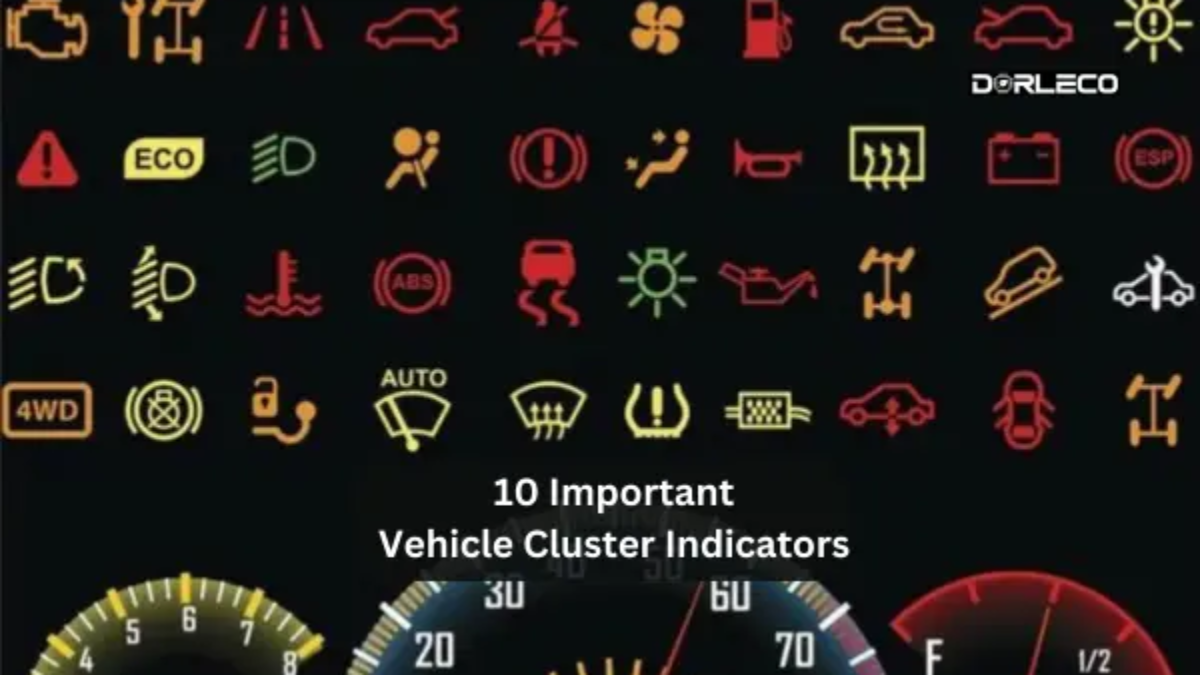Introduction
Vehicle Cluster Indicators
Warning lights in the Vehicle Cluster Indicators identify possible issues with the vehicle and safety concerns. We have listed many of them with their definitions.
When you turn on your car, all of the warning lights are on. Don’t panic; it’s just a system self-check, and they disappear quickly. Here’s what you should know about Vehicle Cluster Indicators if they emerge while you’re driving.
1. Engine Temperature
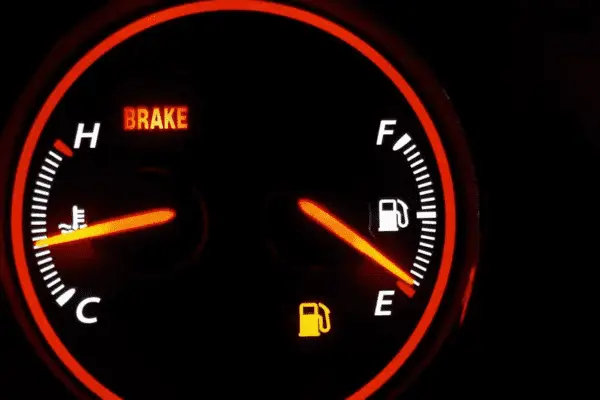
- How does it appear?
A thermometer floats in the lake. Certain autos have temperature gauges.
Cluster Indicators for Vehicles
- How crucial or significant is this warning or symbol?
Elevated.
- What does that mean?
If the gauge needle enters the red area or the warning light comes on, your engine is overheating. Usually, a defective head gasket, a broken hose, or a damaged radiator leaks insufficient coolant. Another potential is a malfunctioning water pump that prevents the engine from circulating coolant.
- When the light turns on, what should you do?
When it’s safe, put the engine out of motion and stop. Engine overheating might result in disastrous consequences. Get the car towed to a garage for repairs.
2. Oil Pressure
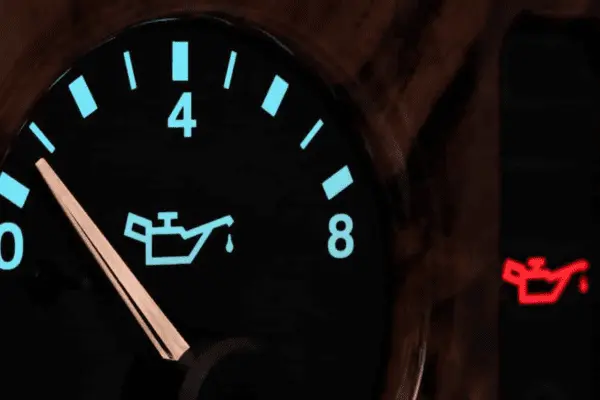
- How does it appear?
Cluster Indicators for Vehicles
A can of crimson petroleum.
- How crucial or significant is this warning or symbol?
Elevated
what does that mean?
Your engine either doesn’t have enough oil in it or the oil pump isn’t driving enough oil into it.
- When the light turns on, what should you do?
Come to a stop and turn off the engine as soon as you can. An engine could suffer irreversible damage from an oil shortage. Get the car towed to a garage for repairs. Additionally, some vehicles include an amber oil can that serves as a “low oil” signal. It’s not an emergency if it turns on, but you should apply oil right away.
3. Battery/Charging System

- How does it appear?
An emblem connected to batteries. In certain autos, it could be a volt gauge.
- How crucial or significant is this warning or symbol?
Elevated.
- What does that mean?
Starting the engine is the primary use of the battery. After that, the charging system replenishes the battery and powers the lights, ignition, and other appliances. When the gauge drops below 13 volts or the warning light illuminates, the charging system malfunctions. This can indicate a problem with the alternator.
- When the light turns on, what should you do?
The car’s battery can run the vehicle, but if the charging system breaks down, the battery won’t last very long. Go to the closest repair shop after shutting off all superfluous items, such as the climate fan and phone charger. If the automobile breaks down, adding more battery won’t make a difference; it will only run for a brief while before stopping again. A tow will be required.
4. Check Engine Light
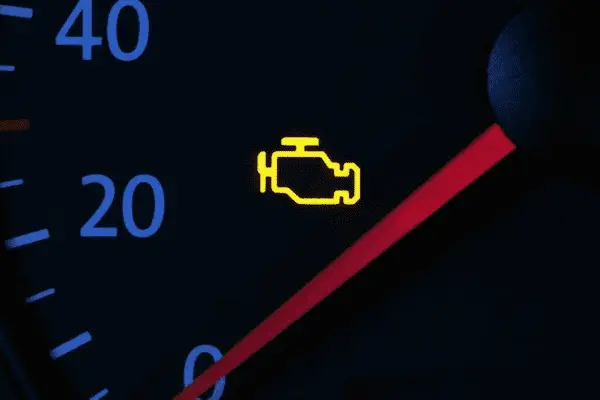
- How does it appear?
An engine has lights that are either flashing amber, red, or amber.
- How crucial or significant is this warning or symbol?
Ranging from low to high.
- To what extent is this warning or emblem important?
From moderate to high.
- What does that mean?
This implies that there might be a problem with the vehicle’s fuel, ignition, or pollution control systems. A loose fuel cap (some vehicles even have a separate “tighten cap” light), and issues with the oxygen sensor, fuel injectors, catalytic converter, or other components are examples of minor issues.
- When the light turns on, what should you do?
To find out if the light is solid amber and the vehicle is running normally, schedule a service appointment. If the automobile is running rough, loses power, or has an amber or red flashing light, slow down and get it fixed as soon as you can. There’s a possibility the problem will damage your expensive catalytic converter.
5. TPMS, or tire pressure monitoring system

- How does it appear?
An exclamation point on a cross-section of tires. Some cars have a display that shows the pressure in each tire. Though not all cars have TPMS, the majority do.
- How crucial or significant is this warning or symbol?
Moderate.
- What does that mean?
The TPMS warning light illuminates when a tire deflates to about 25 to 30 percent of its maximum pressure.
- When the light turns on, what should you do?
If it’s just a light, you’ll have to look at them all to determine which tire is low; if you have a readout, it will tell you which tire is low. Fill the tire to the required pressure using a chart on the driver’s door jamb or the owner’s manual.
6. Anti-Lock Brakes & Brakes (ABS)

- How does it appear?
They are both circles, with half-circles on either side. The brake warning light is red, and occasionally it includes the words BRAKE and a circled exclamation point underneath it. There is an amber anti-lock brake warning light and the ABS (anti-lock braking system), which come on during a panic stop to assist you in keeping control.
- How crucial or significant is this warning or symbol?
From moderate to high.
- What does that mean?
The brake light warns you when brake pads are dangerously worn or when there is insufficient brake fluid. A parking brake warning light that turns on when the brake is applied and off when it is released may be present in some vehicles. There can be a problem if the light illuminates in any other way. The ABS alarm signals a malfunctioning anti-lock braking system. The ABS light will also briefly activate during a panic stop; however, this indicates that it is operating well and does not indicate a malfunction.
- When the light turns on, what should you do?
Seek quick auto repair, especially if there is an increase in stopping distance, the brakes grind or squeak, or the brake pedal looks spongy or depresses more easily than usual.
7. Electronic Stability Control (ESC) and Traction Control
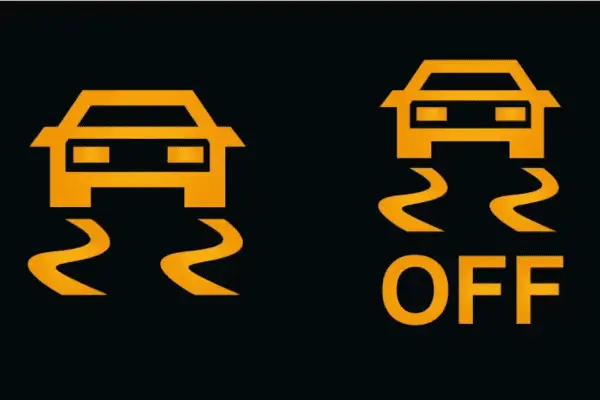
- How does it appear?
Under the tires of an automobile are wavering lines.
Cluster Indicators for Vehicles
- How crucial or significant is this warning or symbol?
They range from modest to moderate.
- What does that mean?
When one tire spins on a slick surface, traction control applies the brake to give the other wheel more grip. When electric stability control detects a skid, it applies brakes to the relevant wheels to help straighten the vehicle.
- When the light turns on, what should you do?
The light flashes or lights briefly while either system is working, usually to warn other vehicles to slow down. You can temporarily turn off the traction control if you want the wheels to spin to help you get out of deep snow. You will be prompted to reactivate the traction control after receiving a warning that it has been turned off. If the stability control or traction warning light comes on while you’re driving normally, there’s a system problem that needs to be serviced.
8. Warning About Airbags

- How does it appear?
A person wearing a seat belt confronting a circular airbag.
- How crucial or significant is this warning or symbol?
From low to high.
- What does that mean?
The red symbol indicates that there is a problem with the airbag system. Some vehicles include an amber light that flashes when the front passenger seat is empty to alert you that the passenger airbag is not required and won’t deploy in an accident.
- When the light turns on, what should you do?
If the light is red, have the car checked out as soon as feasible. The airbags might not go off or activate when driving a car in an accident. Unless it is activated when a person is seated, the amber airbag is not dangerous. That might indicate a problem or, in the event of a crash, stop it from deploying.
9. Power steering warning

- How does it appear?
A question mark on the driver’s seat.
- How crucial or significant is this warning or symbol?
Elevated.
- What does that mean?
This could indicate a problem with the power steering. This could be due to an electrical issue with electric power steering or a hydraulic system with low power steering fluid.
10. Low Fuel Alert Light
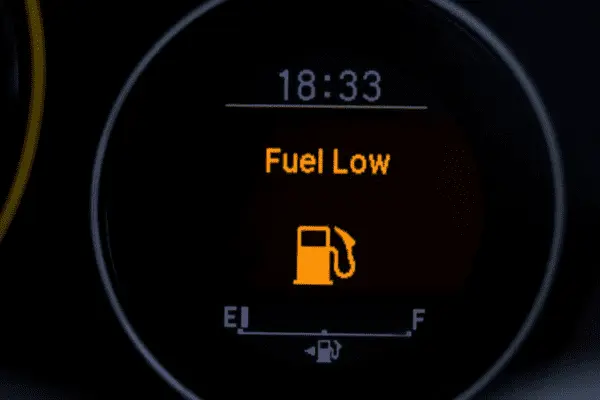
- What appearance does it have?
An amber gas pump.
- How crucial or significant is this warning or symbol?
Moderate.
- What does that mean?
Depending on your car, you might have between 10 and 15 percent left in the tank when the light initially comes on.
- When the light turns on, what should you do?
Not only because you’re lazy and want to fill up instead of walking home. Most gasoline pumps, which are housed inside the tank, are kept cool by fuel. Running low strains the pump excessively and can shorten its life.
Conclusion:
Looking at the top 11 Vehicle Cluster Indicators makes it evident that each one is crucial to maintaining the durability, functionality, and safety of the car. These indicators work as early warning systems, allowing drivers to take preventative measures such as inspecting the engine’s condition, ensuring that the tires are correctly inflated, and alerting them to potential issues. By promptly addressing the issues highlighted by these indicators, drivers can reduce fuel efficiency, avoid expensive repairs, and avoid collisions.
In conclusion, responsible car ownership necessitates closely observing dashboard indicators. Driving may be made safer, more dependable, and more enjoyable by keeping an eye out for these indicators and acting quickly to address any issues they highlight. Ultimately, ensuring both the driver’s safety and the best possible operation of the vehicle depends on your ability to recognize and respond to these signs.


